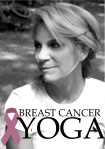Ende 2001 habe ich durch Recherchen viele Studien entdeckt die eine Einnahme von Enzyme als sehr positiv gewertet haben für Lymphödeme und ein positiver Nebeneffekt dass unser immune System wesentlich gestärkt wird. Diese Studien belegen das Enzyme vor allem proteolytische, also eiweißspaltende Enzyme Ödeme/Lymphödeme erheblich vermindern. Die Studien sind durchaus positiv. Wir wissen das Ödeme meistens Eiweißreich sind. Die Proteolytischen und Fibrinolytischen Eigenschaften von Enzymen führen zu einen Abbau von lymphatische Verschlüsse und sind behilflich bei der Rekonstruktion von lymphatischen Passagen, die dann die abgelagerten Proteine auflösen können. Enzyme reduzieren Entzündungen und helfen bzw. lassen eine verhärtung unser Gewebes nicht zu in den betroffenen Regionen. Fortan habe ich die ersten 6 Monate 3 x 3 Enzyme genommen . Meine Tages Dosis ist 2 x 2 und wenn ich merke dass ich auffülle dann erhöhe ich meine Dosierung wieder. In zahlreiche Selbstversuche setzte ich immer wieder ab und merke in wenige Tage dass ich wieder auffülle. Bei meinen Aufenthalt in einer Lymphologische Klinik in Süd Deutschland wollte ich deren Therapie nicht verfälschen also habe ich meine Enzyme abgesetzt, keine Volum Reduktion trotz KPE und alles andere, Gewicht habe ich auch nicht verloren, ganz im Gegenteil es wurde immer schlimmer. Ich habe dann nach Rücksprache gebeten dass ich meine Enzyme wieder einnehmen darf und 2 Tage später reduzierte sich mein Volumen und nach 14 Tage 9,5 Kilo Lymph. Das hat meine Meinung über die Wirksamkeit nur untermauert. Wichtig ist die Zusammensetzung der Enzyme, nicht alle erzielen die gleiche Wirkung bei Lymphödeme, ich nehme Karazym.
Selen: Nehme ich jetzt seit 2012, vorangegangen sind viele Recherchen und lesen von Studien auf eine Internationale ebene. Eine neuere therapeutische Option für Lymphödeme ist Selen, die antiödematöse Wirkung der Selen ist nachgewiesen, wird aber leider nicht eingesetzt. Frühere klinische Studien haben gezeigt, dass die Selen-Supplementierung den Sauerstoffradikalproduktion senkt und somit zu einem spontanen Rückgang der Lymphödem Volumen führt und es erhöht die Wirksamkeit der physikalischen Therapie, und verringert die Häufigkeit von Eripysele . Wichtiger Nebeneffekt ist auch hier Stärkung unseren Immunsystems. Viele Patienten die Lymphödeme haben, bekommen oder haben Hashimoto, auch hier gilt es unser Immun System zu unterstützen. Immer wieder versuche ich ohne und kann ohne Zweifel sagen dass bei Absetzung meine körperliche Verfassung sich deutlich verschlechtert und ich kann zu schauen wie meine Ödeme wieder die überhand haben. Meine Dosierung ist 400ug
Hierzu habe ich ein Beitrag aus Hannover gefunden: http://www.ncbi.nlm.nih.gov/pubmed/15352655





 About Dawn Bradford Lange: Co-founder of
About Dawn Bradford Lange: Co-founder of 